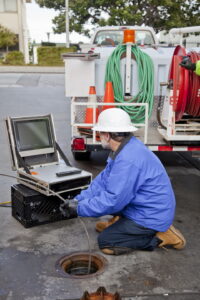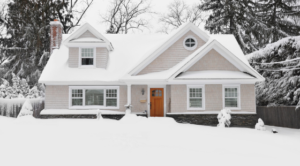Clogs in the drain are household inconveniences that can be avoided. Since many are easily disgusted by the backflow of murky water caused by a clog in its usual path, it’s important to know what shouldn’t be done in order to prevent these blockages from building up inside drains.
As such, professional plumbers in Wisconsin have listed seven effective ways to prevent clogs below, as well as solutions to clogged drains that you can apply.
Don’t pour cooking grease into the sink.
It may be liquid in form when you pour it in, but an instant change in temperature can cause it to solidify. In Wisconsin, where it’s often cold, grease poured down the sink will harden in drain tubes right away, according to professional plumbers who service Applegate and Fox Valley residents.
Don’t dump coffee grounds in the sink.
Sure, these won’t harden in the drains and can be pushed down by the strong flow of water, but they can build up over time, especially if they get caught in hardened grease.
Don’t flush hair down your bathroom drains.
Hair doesn’t deteriorate and it can get entangled with the different elements present in your drain. Use a drain cover and throw away hair in the trash instead. It’s nasty, but what’s nastier is fishing out a huge hairball from your drain that’s preventing water from flushing away from your house.
If grease is already clogging your drain, the quickest solution to use is boiling hot water.
The hot temperature will turn grease into liquid again and it will mix with hot water and flow down the drain easily.
Another solution for clogs created by grease and soap scum is a solution of baking soda and vinegar.
This solution will corrode clogs and clear the drain. Not only that, baking soda and vinegar have disinfecting properties too, so if your drains are getting to be really stinky, the solution can take care of that as well.
To get rid of soap scum and hair, you can also try lye.
If you’re not familiar with lye, it’s a chemical that is used to perm the hair and it’s also used for soaps. Since it’s potent enough to alter the shape of or even burn hair, it’s effective in dissolving clogs in the drain. Make sure that you only use a small amount of lye because it’s a caustic substance.
For clogged garbage disposals, try filling an ice cube tray with equal parts of vinegar and water. Freeze the mixture of vinegar and water, and when you have ice cubes, dump them in the garbage disposal. The acidity from the vinegar will clean the drain and its chips will scrape grease off the drain walls.
If you’re suffering from a clogged drain, schedule an appointment with us today!
Continue Reading
Tags: commercial plumbing, kitchen plumbing, Kitchen Remodel Planning, Plumbing Problems, residential plumbing, sewer and drain, Slow Drains
Posted in Commercial Plumbing, Emergency Plumber, Kitchen Plumbing, Kitchen Remodel Planning, Plumbing Problems, Plumbing Trends, Residential Plumbing, Sewer and Drain, Uncategorized | Comments Off on 7 Ways to Effectively Prevent and Clear Clogs in Your Drain




 n Wisconsin, winters can be fairly pleasurable; snow days provide the ideal setting for a range of entertaining outdoor activities. Extreme cold weather, on the other hand, may cause issues; many houses must deal with keeping frozen pipes from restricting the water supply, but it can also cause pipes to break, and will then be in need of
n Wisconsin, winters can be fairly pleasurable; snow days provide the ideal setting for a range of entertaining outdoor activities. Extreme cold weather, on the other hand, may cause issues; many houses must deal with keeping frozen pipes from restricting the water supply, but it can also cause pipes to break, and will then be in need of 